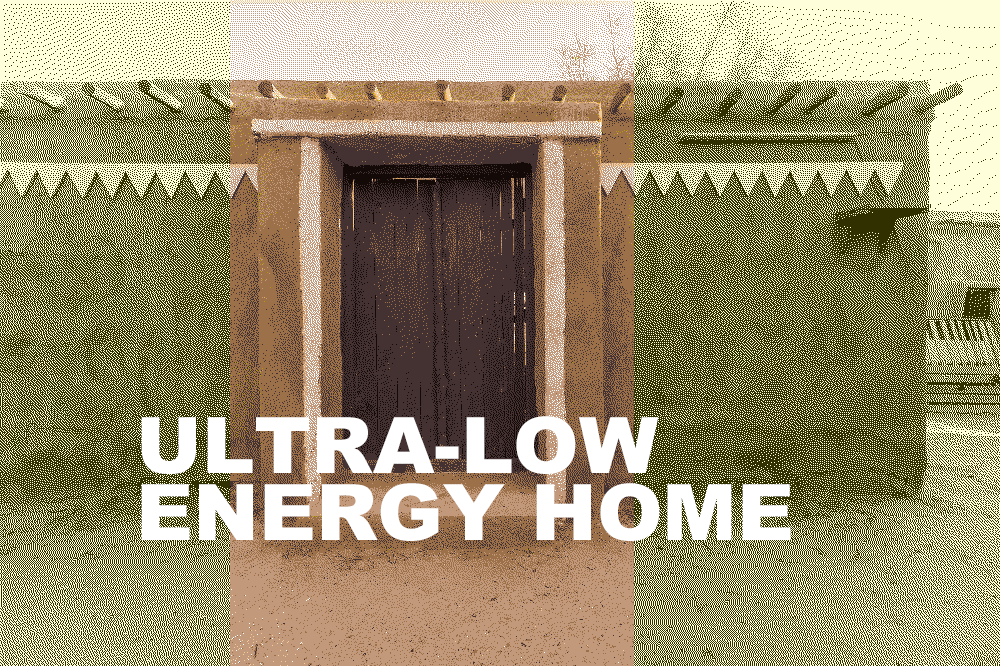Building an Ultra Low-Energy Home on a Shoestring Budget
Unlock the secrets of budget-friendly, ultra-low-energy living inspired by village wisdom. From mud-brick simplicity to eco-friendly innovations.
December 27, 2023 | Written by Gaurav Shorey

Image : Image is the best
Introduction:
In the quest for sustainable living, creating an ultra-low-energy home doesn’t necessarily mean breaking the bank. In fact, some of the most energy-efficient homes can be found in villages where people have ingeniously used local materials, such as mud, and embraced traditional building techniques. In this blog post, we’ll explore how you can make an ultra-low-energy home at the lowest possible price, drawing inspiration from the simple yet effective homes found in villages.
Materials Matter: Mud as a Building Block
The key to constructing an ultra-low-energy home on a budget lies in utilizing locally available materials. Mud, a traditional and abundant resource in many regions, can be an excellent building material. Its thermal mass properties help regulate indoor temperatures, keeping the interior cool in the heat and warm in the cold.
Harnessing Natural Elements: Passive Design Techniques
Villagers in traditional mud homes often rely on passive design techniques that capitalize on natural elements. Consider orienting your home to maximize solar gain in the winter and minimize it in the summer. Strategically placed windows and ventilation can enhance airflow and reduce the need for mechanical cooling.

Image : Image is the best
Embracing Simplicity: Compact Design and Functional Spaces
The design of ultra-low-energy homes in villages is often characterized by simplicity and functionality. Embrace a compact design that minimizes unnecessary square footage, reducing the energy required for both construction and daily living. Consider multi-functional spaces that can serve various purposes, maximizing utility.
Off-the-Grid Living: Solar and Wind Solutions
While traditional mud homes might not have access to electricity, incorporating off-the-grid solutions can make your ultra-low-energy home more sustainable. Solar panels and small-scale wind turbines are becoming increasingly affordable and can provide power for basic lighting and charging needs.
Harvesting Rainwater: Sustainable Water Solutions
Access to clean water is crucial for any home. Mimicking traditional practices, you can harvest rainwater using simple and cost-effective systems. Collecting rainwater in barrels or underground tanks can provide a sustainable water source for daily needs, reducing reliance on energy-intensive water pumps.
Community Collaboration: Shared Resources and Skills
In many villages, community collaboration is a cornerstone of sustainable living. Consider pooling resources with neighbors or like-minded individuals to share costs and skills. Building a sense of community not only benefits the environment but also fosters a support system for maintaining and improving your ultra-low-energy home.
Repurposing and Recycling: Waste as a Resource
Reduce, reuse, and recycle should be the mantra when constructing your ultra-low-energy home. Repurposing materials from local sources and salvaging items from construction sites can significantly cut costs. Additionally, using recycled materials aligns with the eco-friendly ethos of creating a sustainable living space.
Introduction:
In the quest for sustainable living, creating an ultra-low-energy home doesn’t necessarily mean breaking the bank. In fact, some of the most energy-efficient homes can be found in villages where people have ingeniously used local materials, such as mud, and embraced traditional building techniques. In this blog post, we’ll explore how you can make an ultra-low-energy home at the lowest possible price, drawing inspiration from the simple yet effective homes found in villages.
FANUC Technology Center
A government office building that bridges tradition and sustainability
Royal Academy Bhutan
Unique institutional project – school for pedagogical studies in collaboration…
